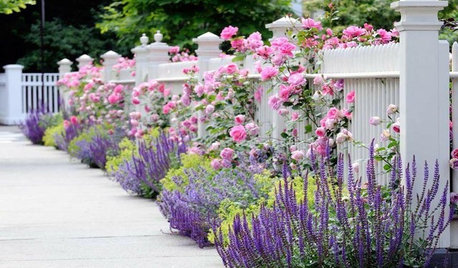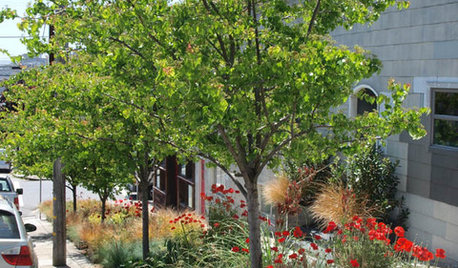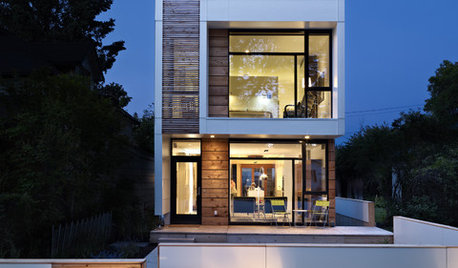Street tree for narrow planting strip?
rickd59
14 years ago
Featured Answer
Sort by:Oldest
Comments (42)
Embothrium
14 years agoToronado3800 Zone 6 St Louis
14 years agoRelated Professionals
Montgomeryville Landscape Architects & Landscape Designers · Cedar Hill Landscape Contractors · Chattanooga Landscape Contractors · El Segundo Landscape Contractors · La Mirada Landscape Contractors · Melrose Park Landscape Contractors · New Providence Landscape Contractors · Oakland Landscape Contractors · Paso Robles Landscape Contractors · St. Louis Landscape Contractors · Madison Siding & Exteriors · Clermont Decks, Patios & Outdoor Enclosures · Lafayette Decks, Patios & Outdoor Enclosures · Layton Decks, Patios & Outdoor Enclosures · Rancho Palos Verdes Decks, Patios & Outdoor Enclosuresrickd59
14 years agoEmbothrium
14 years agoDan _Staley (5b Sunset 2B AHS 7)
14 years agoalabamatreehugger 8b SW Alabama
14 years agoken_adrian Adrian MI cold Z5
14 years agokimcoco
14 years agorickd59
14 years agoEmbothrium
14 years agojean001
14 years agorickd59
14 years agoken_adrian Adrian MI cold Z5
14 years agorickd59
14 years agoDan _Staley (5b Sunset 2B AHS 7)
14 years agoiforgotitsonevermind
14 years agoDan _Staley (5b Sunset 2B AHS 7)
14 years agomdvaden_of_oregon
14 years agowhaas_5a
14 years agoiforgotitsonevermind
14 years agolou_spicewood_tx
14 years agorickd59
14 years agoalabamatreehugger 8b SW Alabama
14 years agoToronado3800 Zone 6 St Louis
14 years agoiforgotitsonevermind
14 years agoDan _Staley (5b Sunset 2B AHS 7)
14 years agoiforgotitsonevermind
14 years agoginkgonut
14 years agotree_oracle
14 years agoiforgotitsonevermind
14 years agoDan _Staley (5b Sunset 2B AHS 7)
14 years agoDan _Staley (5b Sunset 2B AHS 7)
14 years agorickd59
14 years agoDan _Staley (5b Sunset 2B AHS 7)
14 years agorickd59
14 years agolou_spicewood_tx
14 years agoalabamatreehugger 8b SW Alabama
14 years agorickd59
14 years agorickd59
14 years agoiforgotitsonevermind
14 years agoDan _Staley (5b Sunset 2B AHS 7)
14 years ago
Related Stories

LANDSCAPE DESIGN4 Gorgeous Garden Looks for a Narrow Planting Strip
Make a strong design statement in an unexpected place with these ideas for perimeter plantings, pocket gardens and more
Full Story
FARM YOUR YARDHow to Farm Your Parking Strip
Get an up-close look at a thriving street-side edible garden, one of many sprouting up in Seattle
Full Story
CURB APPEALTake Your Hell Strip to Heavenly Heights: 8 Design Ideas
Trade weedy dirt and trash for a parking strip filled with wispy grasses, low-growing flowers and textural trees
Full Story
TREES7 Deer-Resistant Flowering Trees to Plant this Fall
If you live in a neighborhood with roaming deer, consider these beautiful trees that won't tempt hungry guests
Full Story
HOUZZ TOURSHouzz Tour: Wide-Open Views on a Narrow Canadian Lot
Expansive glass walls facing the street create openness, sun-filled rooms and closer relations with the neighbors
Full Story
GARDENING GUIDESWhen and How to Plant a Tree, and Why You Should
Trees add beauty while benefiting the environment. Learn the right way to plant one
Full Story
GARDENING GUIDESGrow Your Own Privacy: How to Screen With Plants and Trees
Use living walls to lower your home and garden's exposure while boosting natural beauty in your landscape
Full Story
TREESGreat Design Plant: Coral Bark Japanese Maple, a Winter Standout
Go for garden gusto during the chilly season with the fiery red stems of this unusual Japanese maple
Full Story
GARDENING GUIDESTree Care: Common Tree Diseases and What to Do About Them
Learn to recognize trees that may be affected by diseases or pests so you can quickly take action
Full Story
TREESGreat Design Plant: Downy Serviceberry
Plant this sculptural tree in fall or spring for year-round interest and graceful beauty
Full Story






bobb_grow